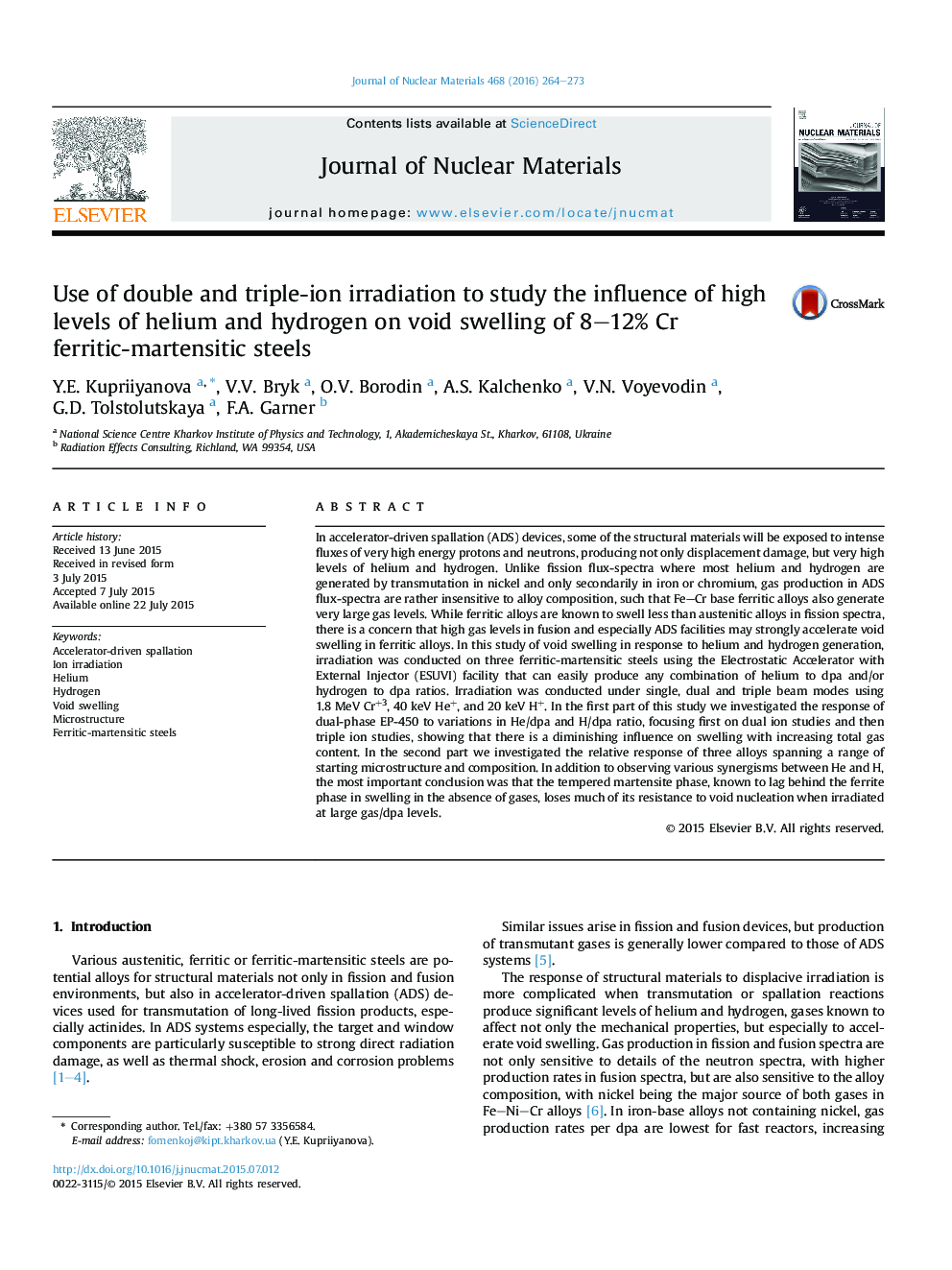| کد مقاله | کد نشریه | سال انتشار | مقاله انگلیسی | نسخه تمام متن |
|---|---|---|---|---|
| 1564840 | 1514178 | 2016 | 10 صفحه PDF | دانلود رایگان |
عنوان انگلیسی مقاله ISI
Use of double and triple-ion irradiation to study the influence of high levels of helium and hydrogen on void swelling of 8-12% Cr ferritic-martensitic steels
دانلود مقاله + سفارش ترجمه
دانلود مقاله ISI انگلیسی
رایگان برای ایرانیان
کلمات کلیدی
موضوعات مرتبط
مهندسی و علوم پایه
مهندسی انرژی
انرژی هسته ای و مهندسی
پیش نمایش صفحه اول مقاله

چکیده انگلیسی
In accelerator-driven spallation (ADS) devices, some of the structural materials will be exposed to intense fluxes of very high energy protons and neutrons, producing not only displacement damage, but very high levels of helium and hydrogen. Unlike fission flux-spectra where most helium and hydrogen are generated by transmutation in nickel and only secondarily in iron or chromium, gas production in ADS flux-spectra are rather insensitive to alloy composition, such that Fe-Cr base ferritic alloys also generate very large gas levels. While ferritic alloys are known to swell less than austenitic alloys in fission spectra, there is a concern that high gas levels in fusion and especially ADS facilities may strongly accelerate void swelling in ferritic alloys. In this study of void swelling in response to helium and hydrogen generation, irradiation was conducted on three ferritic-martensitic steels using the Electrostatic Accelerator with External Injector (ESUVI) facility that can easily produce any combination of helium to dpa and/or hydrogen to dpa ratios. Irradiation was conducted under single, dual and triple beam modes using 1.8Â MeV Cr+3, 40Â keV He+, and 20Â keV H+. In the first part of this study we investigated the response of dual-phase EP-450 to variations in He/dpa and H/dpa ratio, focusing first on dual ion studies and then triple ion studies, showing that there is a diminishing influence on swelling with increasing total gas content. In the second part we investigated the relative response of three alloys spanning a range of starting microstructure and composition. In addition to observing various synergisms between He and H, the most important conclusion was that the tempered martensite phase, known to lag behind the ferrite phase in swelling in the absence of gases, loses much of its resistance to void nucleation when irradiated at large gas/dpa levels.
ناشر
Database: Elsevier - ScienceDirect (ساینس دایرکت)
Journal: Journal of Nuclear Materials - Volume 468, January 2016, Pages 264-273
Journal: Journal of Nuclear Materials - Volume 468, January 2016, Pages 264-273
نویسندگان
Y.E. Kupriiyanova, V.V. Bryk, O.V. Borodin, A.S. Kalchenko, V.N. Voyevodin, G.D. Tolstolutskaya, F.A. Garner,